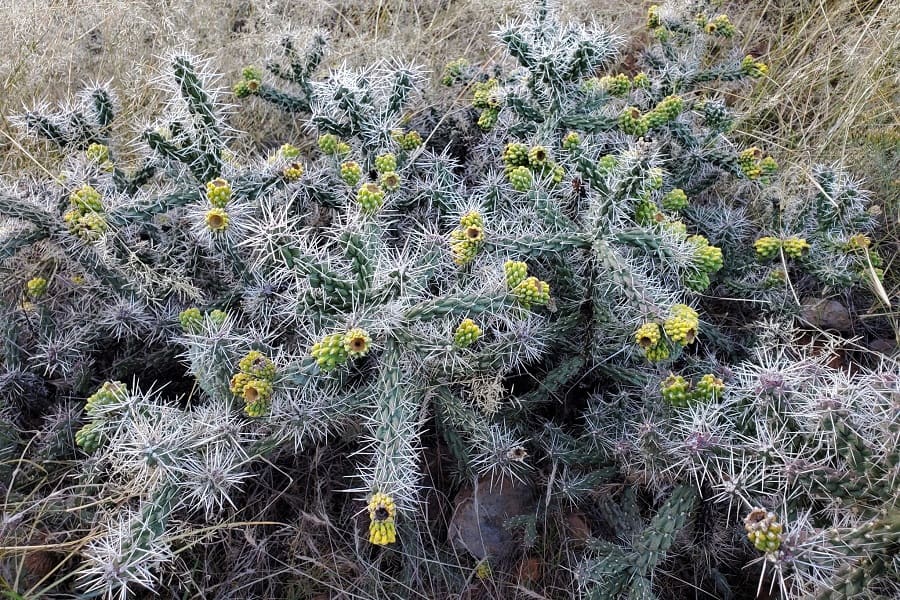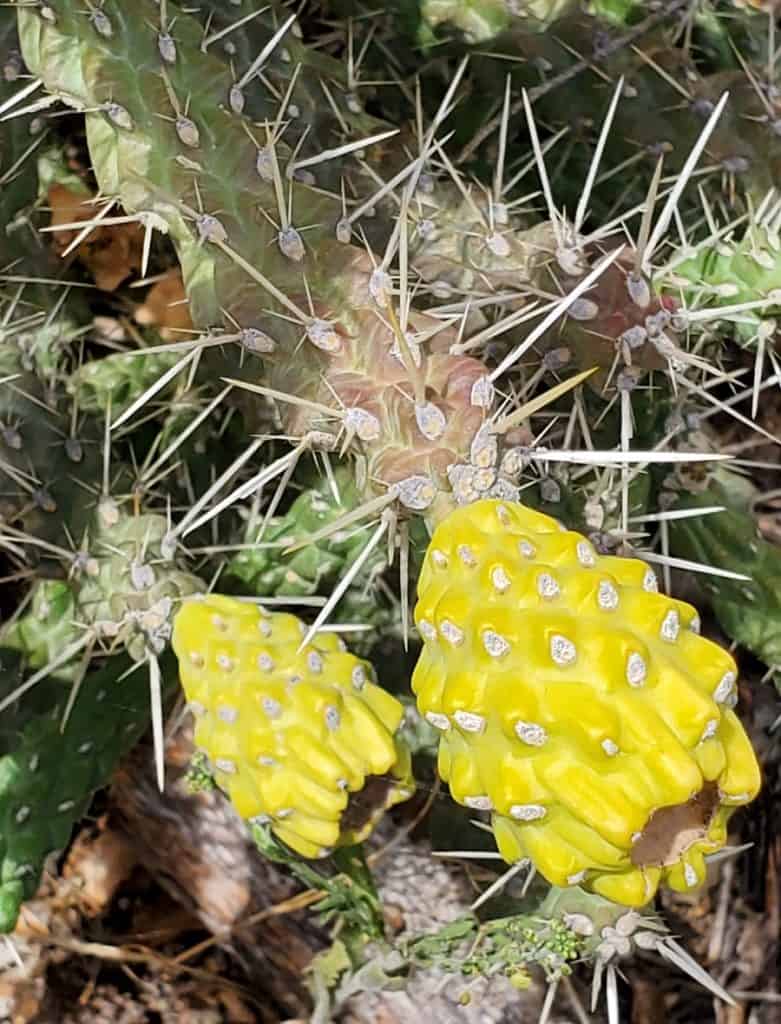Opuntia whipplei: Characteristics and Care
Have you ever come across a cactus that looks like it’s glowing in the moonlight? Meet the captivating Opuntia whipplei, also known as the whipple cholla or cylindrical cholla. This prickly plant is sure to add a touch of magic to your garden!
With its brilliant white spines that seem to radiate light when hit by the sun, the Opuntia whipplei is an eye-catching succulent. Its compact, shrub-like shape makes it perfectfor landscaping or as a striking potted plant. And get this – its bright yellow-green flowers are an absolute showstopper when they bloom in late spring to early summer.
But the cool features don’t stop there! This little desert dweller has some serious street cred. Its species name “whipplei” honors Amiel Weeks Whipple, an American surveyor and engineer from way back in the 1800s. How’s that for history?

Contents
About Opuntia whipplei
Native to the southwestern United States and northern Mexico, the Opuntia whipplei falls under the cactus family known as Cactaceae. It grows as a low-lying mat or upright shrub without a large trunk.
Depending on the conditions, this cactus can reach anywhere from 1 to 5 feet tall and spread several feet wide. Its slender green stem segments are covered in rows of protruding bumps with clusters of sharp white or reddish-brown spines emerging from them.
The spines are straight and sturdy, measuring up to 1-2 inches long. They grow in a cross pattern from the stem joints, almost seeming to glow in contrast against the green stems.
While not the biggest bloomer, the yellow-green whipple cholla flowers are still a real treat when they appear in spring and summer. And its bumpy yellow fruits offer a fun quirky detail.
Related Post:
195 Opuntia Varieties [With Pictures]
How to Care for Opuntia whipplei
Light
Like most cacti, the whipple cholla thrives in direct, full sun exposure. Aim to give it at least 6-8 hours of sunlight per day. An unshaded south or west-facing area is ideal.
If you’re growing it indoors, place it right in front of a bright window. Or use a grow light about 12 inches away for 12-14 hours per day to mimic sunlight.
Water
Don’t go dumping tons of water on this desert native! The Opuntia whipplei likes its soil on the drier side, so be sure to use a well-draining potting mix.
During the spring, summer and fall growing season, give it a good soak once every 1-2 weeks, allowing the soil to fully dry out between waterings. In winter, you can cut back to watering just once a month or so.
Always avoid getting the stems wet to prevent rot. And be sure to use room temperature water rather than cold.
Soil
A well-draining soil mix is crucial for the whipple cholla to prevent issues like root rot. A cactus and succulent potting mix combined with some horticultural sand or perlite works perfectly.
You can also make your own mix by combining:
- 2 parts potting soil
- 2 parts coarse sand or perlite
- 1 part compost or bark chips
Just be sure it drains rapidly when you water so the roots don’t sit in moisture.
Fertilizer

Feed your Opuntia whipplei cactus once a month during its spring to fall growing period using a balanced liquid fertilizer diluted to half strength. Hold off on fertilizing in the winter when growth is minimal.
You can also top-dress the soil with a diluted liquid seaweed fertilizer or worm compost to provide nutrients while keeping things nice and gritty.
Temperature and Humidity
This hardy cactus loves hot and dry conditions with temperatures ideally between 65-95°F. It can handle near-freezing temps down to around 25°F during winter, but shield it from frost.
Provide excellent airflow and lower humidity to create a nice desert environment. Too much moisture hanging around can lead to rot and disease issues.
Pests and Problems
Overall a pretty sturdy plant, but watch out for common cactus pests like mealybugs or scale insects which can leave behind sugary residues.
The biggest threats are fungal infections like root rot from overwatering or prolonged moisture on the stems and branches. Be vigilant about providing fast drainage and low humidity.
Pruning

Very little pruning is required for this low-maintenance cactus beyond snipping off any dead or damaged stems or flowers. Use clean pruning shears and protect your hands!
Potting and Repotting
The whipple cholla greatly prefers being kept in a container versus planted in the ground, so choose an unglazed ceramic pot with a drainage hole.
Repot every couple of years in early spring using a fresh, well-draining cactus potting mix. Handle gently to avoid detaching any stems or branches.
How to Propagate Opuntia whipplei
This cactus readily propagates from cuttings or seed. Here’s how:
From Cuttings:
- Use a sharp, sterilized knife or pruners to cut off a short stem segment
- Allow the cutting to callous over for several days until the cut end dries out
- Fill a small pot with well-draining cactus mix
- Stick the calloused end into the soil and water lightly
- Place in a bright spot and water sparingly until new growth emerges
From Seed:
- Soak seeds in water for 12 hours before planting
- Fill a seed tray with cactus seed starting mix
- Sow seeds on top and cover with a thin layer of soil
- Lightly water and cover to maintain humidity
- Remove cover once sprouted and water sparingly
With its luminous spines and captivating blooms, the Opuntia whipplei is guaranteed to draw double-takes in your garden or home! Just steer clear of those prickly spines when admiring this spectacular little succulent.
